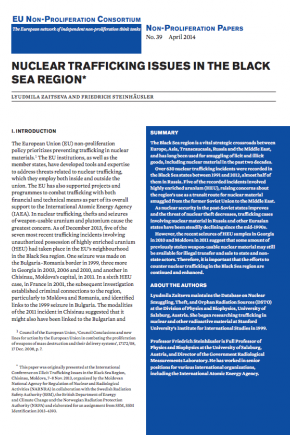Nuclear Trafficking Issues in the Black Sea Region
The Black Sea region is a vital strategic crossroads between Europe, Asia, Transcaucasia, Russia and the Middle East, and has long been used for smuggling of licit and illicit goods, including nuclear material in the past two decades.
Over 630 nuclear trafficking incidents were recorded in the Black Sea states between 1991 and 2012, almost half of them in Russia. Five of the recorded incidents involved highly enriched uranium (HEU), raising concerns about the region’s use as a transit route for nuclear material smuggled from the former Soviet Union to the Middle East.
As nuclear security in the post-Soviet states improves and the threat of nuclear theft decreases, trafficking cases involving nuclear material in Russia and other Eurasian states have been steadily declining since the mid-1990s.
However, the recent seizures of HEU samples in Georgia in 2010 and Moldova in 2011 suggest that some amount of previously stolen weapon-usable nuclear material may still be available for illegal transfer and sale to state and nonstate actors. Therefore, it is important that the efforts to counter nuclear trafficking in the Black Sea region are continued and enhanced.

